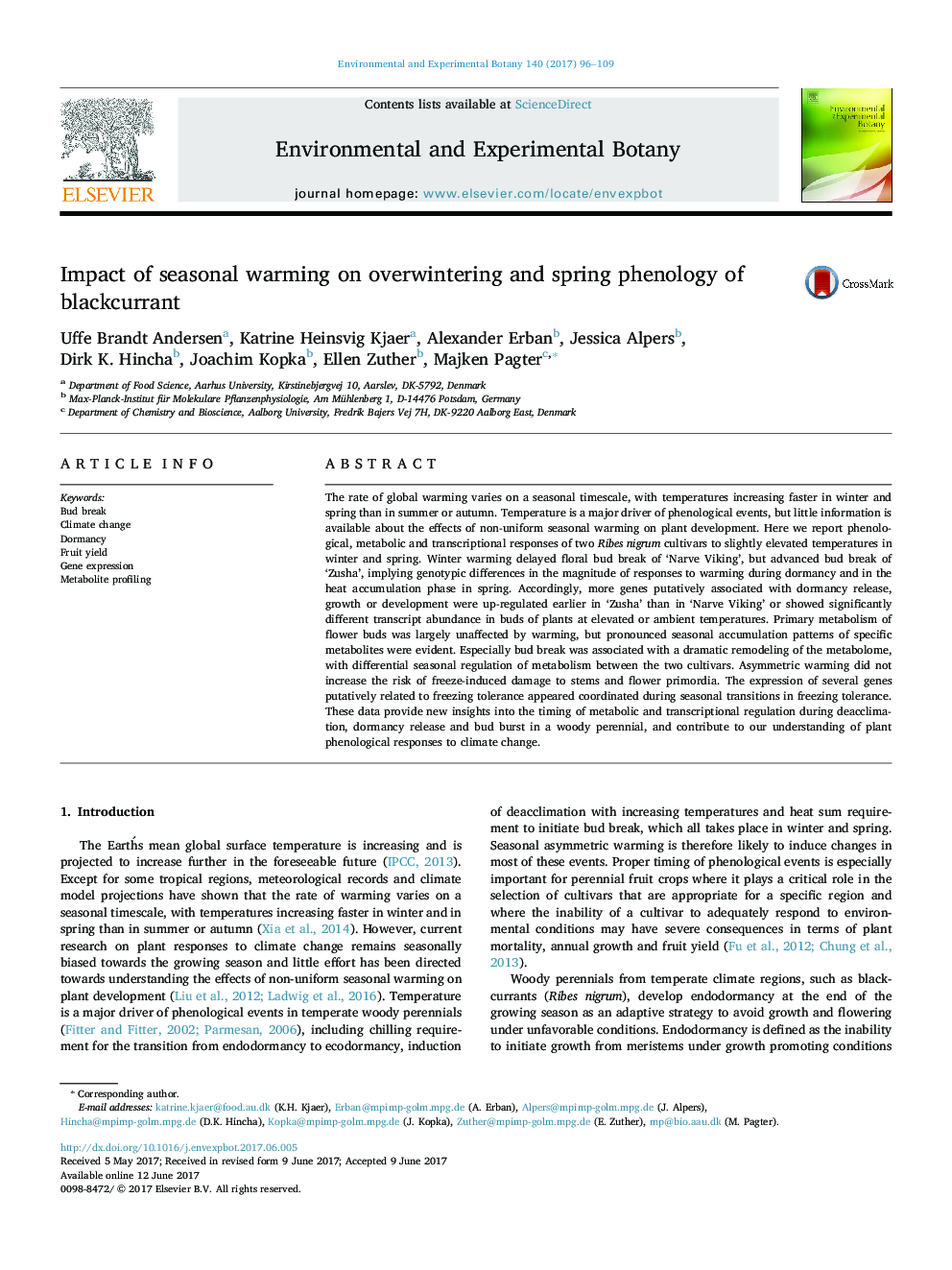| کد مقاله | کد نشریه | سال انتشار | مقاله انگلیسی | نسخه تمام متن |
|---|---|---|---|---|
| 5766649 | 1628037 | 2017 | 14 صفحه PDF | دانلود رایگان |
- Seasonal asymmetric warming may reduce fruit yield of blackcurrant.
- Genotypes differ in their responsiveness to warming during dormancy and in the heat accumulation phase.
- Asymmetric warming modulates expression of genes related to dormancy release and floral organ development.
- Bud break involves a dramatic remodeling of the metabolome.
- Cold related genes are coordinated during seasonal transitions in freezing tolerance.
The rate of global warming varies on a seasonal timescale, with temperatures increasing faster in winter and spring than in summer or autumn. Temperature is a major driver of phenological events, but little information is available about the effects of non-uniform seasonal warming on plant development. Here we report phenological, metabolic and transcriptional responses of two Ribes nigrum cultivars to slightly elevated temperatures in winter and spring. Winter warming delayed floral bud break of 'Narve Viking', but advanced bud break of 'Zusha', implying genotypic differences in the magnitude of responses to warming during dormancy and in the heat accumulation phase in spring. Accordingly, more genes putatively associated with dormancy release, growth or development were up-regulated earlier in 'Zusha' than in 'Narve Viking' or showed significantly different transcript abundance in buds of plants at elevated or ambient temperatures. Primary metabolism of flower buds was largely unaffected by warming, but pronounced seasonal accumulation patterns of specific metabolites were evident. Especially bud break was associated with a dramatic remodeling of the metabolome, with differential seasonal regulation of metabolism between the two cultivars. Asymmetric warming did not increase the risk of freeze-induced damage to stems and flower primordia. The expression of several genes putatively related to freezing tolerance appeared coordinated during seasonal transitions in freezing tolerance. These data provide new insights into the timing of metabolic and transcriptional regulation during deacclimation, dormancy release and bud burst in a woody perennial, and contribute to our understanding of plant phenological responses to climate change.
Journal: Environmental and Experimental Botany - Volume 140, August 2017, Pages 96-109
